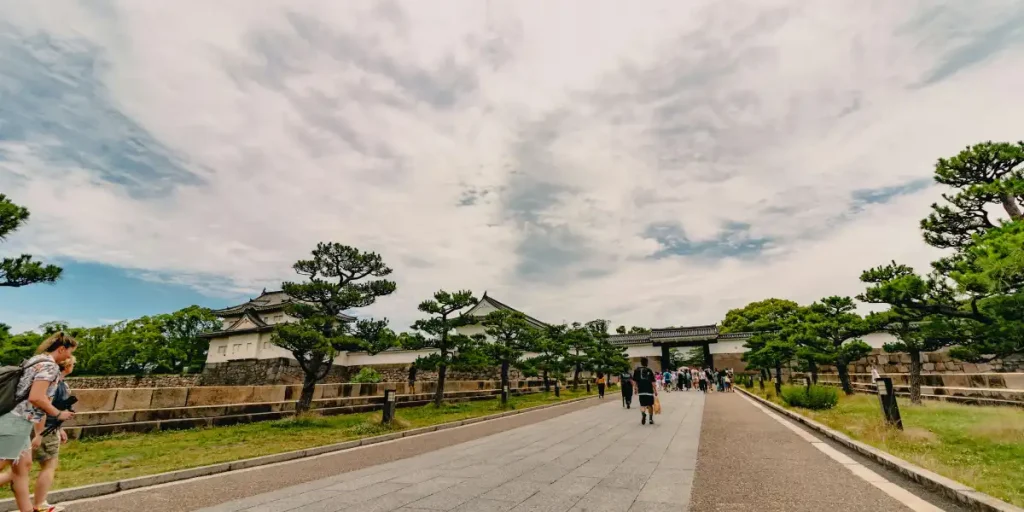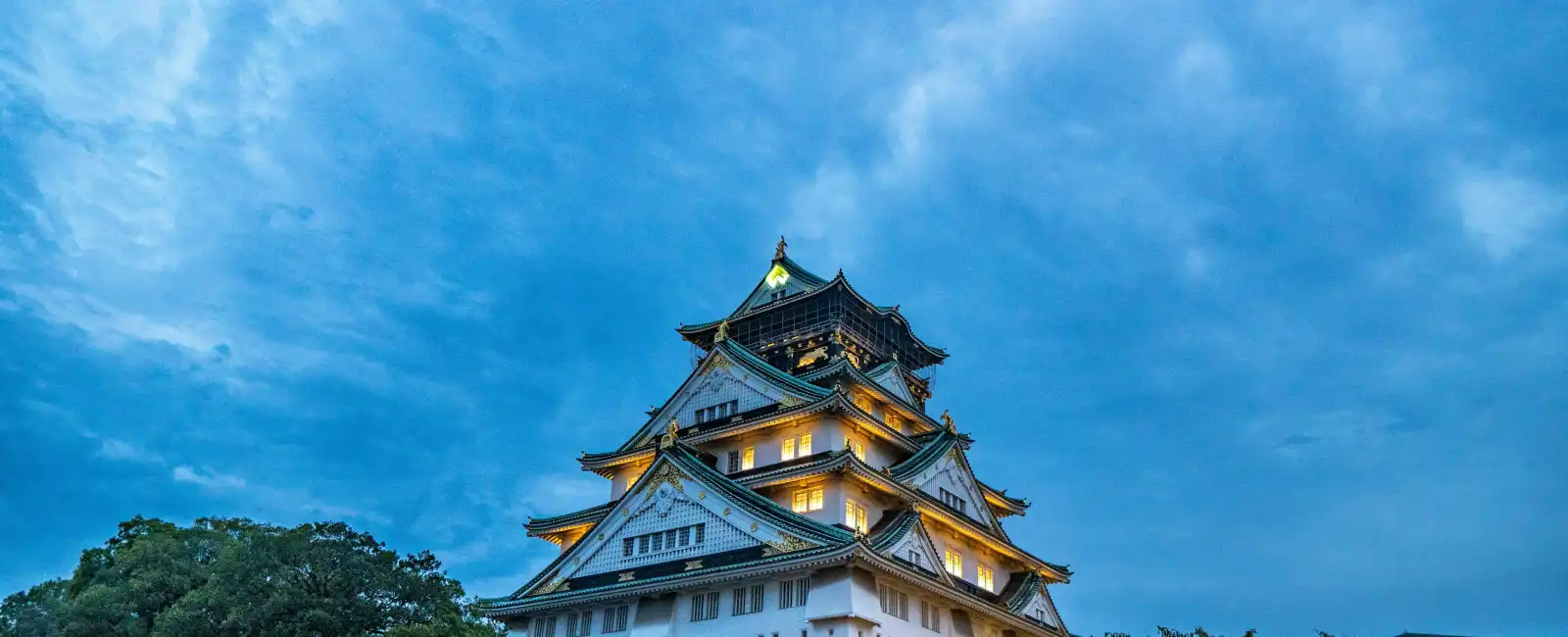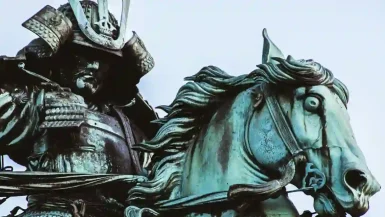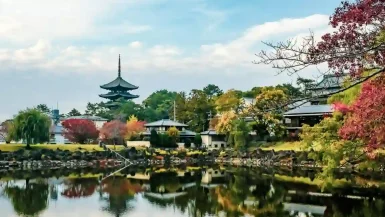Introduction
Osaka Castle, an iconic symbol of Japan’s rich history and culture, stands majestically in the heart of Osaka. This splendid structure, with its deep-rooted historical significance, attracts millions of visitors each year. In this blog, we will delve into the captivating history, architectural marvels, and cultural importance of Osaka Castle. Join us on this journey to discover the essence of this remarkable landmark.
The Historical Significance of Osaka Castle
Origins and Early History
The Castle’s origins date back to the late 16th century. Specifically, it was initially built by the famous warlord Toyotomi Hideyoshi in 1583. At that time, Hideyoshi was one of Japan’s most powerful figures, and the castle symbolized his military might and strategic vision. Interestingly, the castle was constructed on the site of the Ishiyama Honganji Temple, which had been destroyed by Oda Nobunaga, Hideyoshi’s predecessor and mentor. This choice of location was significant, as it demonstrated Hideyoshi’s determination to establish his authority over the region. Moreover, Hideyoshi aimed to unify Japan, and the Castle was central to his ambitions, serving as a base for his campaigns. As a result, the castle became a focal point for the administration of his vast territories. Ultimately, while the original castle was lost to history, its reconstruction allows visitors to appreciate the grandeur and historical importance of this iconic structure.
The Role in Unification
The Castle played a crucial role in Japan’s unification. During this period, it served as the headquarters for Toyotomi Hideyoshi during his military campaigns. Thanks to the castle’s strategic location, Hideyoshi could control the surrounding regions effectively, consolidating his power. Moreover, the castle’s presence reinforced his dominance, making it a key asset in his efforts to unify Japan. After Hideyoshi’s death, the castle continued to be a symbol of power and authority, representing the legacy of his leadership. Over the years, the castle became a vital center of governance, influencing the political landscape of the region.
The Siege and Destruction
In the early 17th century, the Castle faced significant challenges. At that time, the Tokugawa shogunate, led by Tokugawa Ieyasu, sought to eliminate the Toyotomi clan’s influence. This power struggle culminated in 1615, when the castle was besieged during the Summer War of Osaka. Despite the fierce resistance from Toyotomi loyalists, the castle eventually fell, leading to its partial destruction. This defeat marked the end of the Toyotomi lineage’s dominance in Japan. Following the fall of the castle, the Tokugawa shogunate solidified its control over the entire country, ushering in a new era of centralized power. In the years that followed, the remnants of the castle served as a reminder of the dramatic shift in Japan’s political landscape. Ultimately, the events surrounding the castle’s fall played a pivotal role in shaping the course of Japanese history.
Architectural Marvels of Osaka Castle
The Grand Design
The Castle’s architectural design is nothing short of spectacular. Particularly impressive is the main tower, or donjon, which serves as a stunning example of Azuchi-Momoyama architecture. As you approach the structure, you’ll notice the five-story exterior, which contrasts beautifully with the eight-story interior, each level adorned with intricate carvings and gold leaf decorations. These details highlight the craftsmanship and artistic talent of the period, making the castle a true masterpiece. Once inside, you can explore the interior, where exhibits showcase the history and significance of the castle through the centuries. Moreover, the donjon stands tall, offering panoramic views of Osaka, which are particularly breathtaking at sunset. From this vantage point, you can see how the castle once dominated the skyline and served as a symbol of power.
Finally, don’t forget to take a moment to appreciate the surrounding moats and walls, which add to the castle’s majestic presence and historical allure.
The Moats and Walls
The castle’s defensive features are equally impressive. The Castle is surrounded by massive stone walls and deep moats. These fortifications were designed to withstand attacks and protect the castle from invaders. The inner moat, filled with water, adds to the castle’s picturesque beauty.
The Main Keep
The main keep, reconstructed in the 20th century, houses a museum dedicated to the castle’s history. Visitors can explore exhibits showcasing samurai armor, weapons, and artifacts from the castle’s past. The observation deck on the top floor provides breathtaking views of the city and surrounding landscapes.
The Gardens and Surroundings of Osaka Castle
Nishinomaru Garden
Nishinomaru Garden, located within the castle grounds, is a tranquil oasis. This beautifully landscaped garden features cherry blossom trees, meticulously manicured lawns, and traditional tea houses. During cherry blossom season, the garden transforms into a sea of pink, attracting locals and tourists alike.

Osaka Castle Park
Osaka Castle Park, encompassing the castle, offers a serene escape from the bustling city. The park is a popular spot for picnics, leisurely walks, and cultural events. With its vast green spaces, scenic ponds, and seasonal flower displays, the park provides a perfect backdrop for relaxation and recreation.
The Inner Citadel
The inner citadel, or honmaru, is the castle’s core area. It contains the main keep, gates, and other essential structures. Walking through the inner citadel allows visitors to immerse themselves in the castle’s rich history and experience its architectural grandeur up close.
Cultural Significance of Osaka Castle
Festivals and Events
The Castle hosts a variety of cultural festivals and events throughout the year. The Osaka Castle Festival, held annually, celebrates the castle’s historical importance. Traditional performances, parades, and food stalls create a festive atmosphere. The castle also hosts events like tea ceremonies, martial arts demonstrations, and seasonal illuminations.
Educational Programs
The castle’s museum and educational programs provide valuable insights into Japan’s feudal era. Visitors have the opportunity to participate in guided tours, workshops, and lectures, which are designed to immerse them in the rich history of the castle and the samurai culture. These interactive experiences offer a deeper understanding of the historical context and significance of Osaka Castle, making it more than just a visual attraction. In addition to the tours, the museum features detailed exhibits that showcase samurai armor, weapons, and artifacts, allowing visitors to connect with Japan’s past on a personal level. Moreover, the workshops often include hands-on activities, such as calligraphy or traditional crafts, providing a memorable and engaging experience.
For those interested in architecture, the lectures delve into the unique design and reconstruction efforts of the castle, highlighting its importance as a cultural symbol. Furthermore, special events and seasonal programs offer fresh perspectives, ensuring that even repeat visitors discover something new. Ultimately, these educational offerings enrich your visit, allowing you to walk away with a profound appreciation for Japan’s feudal history and the enduring legacy of Osaka Castle.
Preservation Efforts
Preserving the Castle is a priority for the local authorities. In fact, restoration projects and conservation efforts are regularly undertaken to ensure the castle remains a cherished heritage site. These initiatives involve meticulous attention to detail, aiming to maintain the castle’s authentic appearance while strengthening its structure. Moreover, the ongoing maintenance and preservation work allow future generations to appreciate the castle’s historical and cultural value. As part of these efforts, experts continuously monitor the castle’s condition, addressing any wear and tear promptly.
Visiting Osaka Castle: A Practical Guide to Osaka Castle
Getting There
Osaka Castle is easily accessible by public transportation. For those traveling by train, the nearest stations are Osakajokoen Station and Tanimachi 4-chome Station. From these stations, it’s just a short walk to the castle grounds, making it convenient for visitors. In addition to trains, buses and taxis are also available, providing flexible options to reach the castle. As you approach the castle, you’ll notice the impressive stone walls and moats that surround the area, adding to the historical ambiance. Moreover, the path leading to the castle is lined with beautiful greenery, offering a pleasant stroll. It’s especially fascinating during cherry blossom season.
If you prefer a more scenic route, consider walking through Osaka Castle Park. which surrounds the castle and provides a peaceful retreat from the bustling city. Ultimately, whether you choose to arrive by train, bus, or taxi, reaching Osaka Castle is straightforward, allowing you to focus on enjoying this iconic landmark.
Admission and Opening Hours of Osaka Castle
The castle is open to the public year-round. Visitors can explore the main keep, which operates from 9:00 AM to 5:00 PM, with extended hours during special events. For those planning a visit, admission fees are reasonable, making it an accessible experience for all. Moreover, discounts are available for children, students, and seniors, ensuring that everyone can enjoy this historical site. If you’re traveling with a group, tours can also be arranged in advance. Arranged tours provide a more in-depth exploration of the castle’s history and architecture.
Best Time to Visit
The best time to visit Osaka Castle is during spring (March to April) and autumn (October to November). In spring, cherry blossoms create a stunning backdrop, turning the castle grounds into a picturesque wonderland. Meanwhile, autumn brings vibrant foliage, with the trees surrounding the castle displaying rich hues of red, orange, and yellow. These seasons offer pleasant weather, making it ideal for leisurely walks around the castle and its surrounding park. Moreover, the seasonal changes enhance the overall experience, allowing visitors to appreciate the beauty of Osaka Castle in different natural settings. In addition, spring and autumn are less humid compared to the summer months, ensuring a more comfortable visit.
To fully immerse yourself in the experience, consider visiting early in the morning or late in the afternoon to avoid crowds and capture the castle in the soft light of dawn or dusk. Ultimately, these seasons not only provide visual delight but also create a serene and memorable atmosphere that makes your visit to Osaka Castle truly special.
Exploring the Surroundings
Beyond the castle, Osaka offers a wealth of attractions. For instance, the bustling Dotonbori district, with its neon lights and vibrant street food scene, is a must-visit for any traveler. As you stroll through Dotonbori, you’ll find yourself immersed in the energetic atmosphere, surrounded by iconic landmarks like the Glico Running Man and the giant crab sign. In addition to Dotonbori, the Umeda Sky Building provides a unique architectural experience, offering panoramic views of the city from its floating garden observatory.
Another highlight, Osaka Aquarium Kaiyukan, is one of the largest aquariums in the world. It features a diverse range of marine life, including majestic whale sharks. These attractions not only showcase Osaka’s modern charm, but they also perfectly complement a visit to Osaka Castle, blending history with contemporary experiences. Moreover, the city’s efficient public transportation makes it easy to explore these sites in a single day. Ultimately, Osaka’s rich variety of attractions ensures that your visit will be both exciting and memorable, offering something for every interest.
Conclusion
Osaka Castle stands as a testament to Japan’s rich history, architectural brilliance, and cultural heritage. From its origins in the late 16th century to its role in unifying Japan, the castle has witnessed significant events that shaped the nation. Its towering walls, impressive stonework, and intricately designed interiors reflect the ingenuity and craftsmanship of the era. The castle is surrounded by beautiful gardens that bloom with vibrant colors throughout the year. It’s offering a peaceful retreat in the heart of the city. As you explore the castle grounds, you’ll find numerous informative displays and exhibits that delve into the life of Toyotomi Hideyoshi, the castle’s founder, and the pivotal battles fought in its shadow.
Moreover, the castle’s museum provides a deeper understanding of Japan’s feudal history, with artifacts and dioramas that bring the past to life. For those interested in panoramic views, the top floor of the main keep offers stunning vistas of Osaka, blending the old and new cityscapes. Whether you’re a history enthusiast, a culture lover, or simply seeking a serene escape, Osaka Castle has something to offer every visitor. Plan your visit to this historical gem, and immerse yourself in the captivating stories and timeless beauty of Osaka Castle. Don’t miss the opportunity to witness one of Japan’s most iconic landmarks, where history and culture converge in an unforgettable experience.



